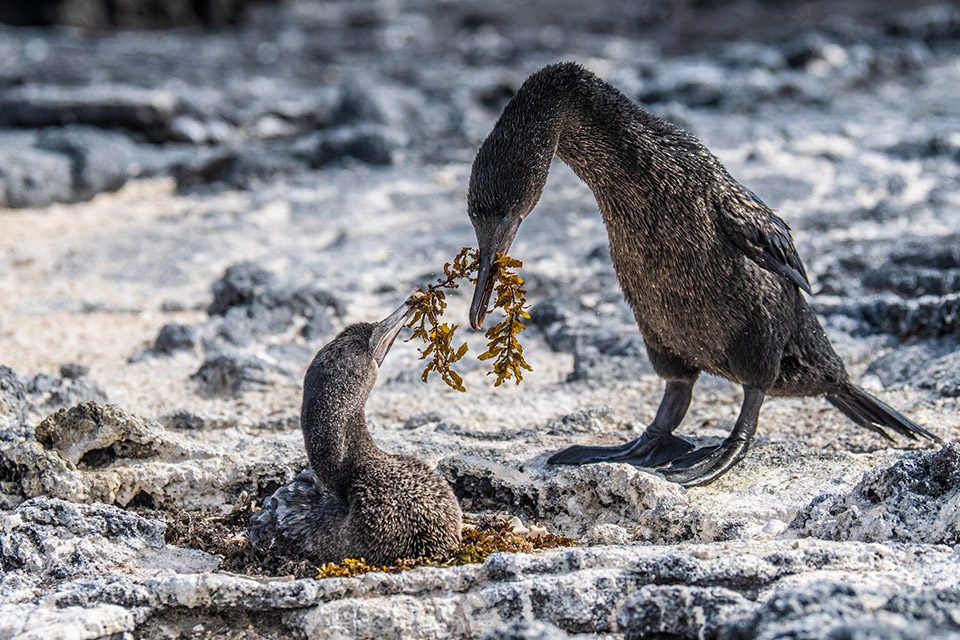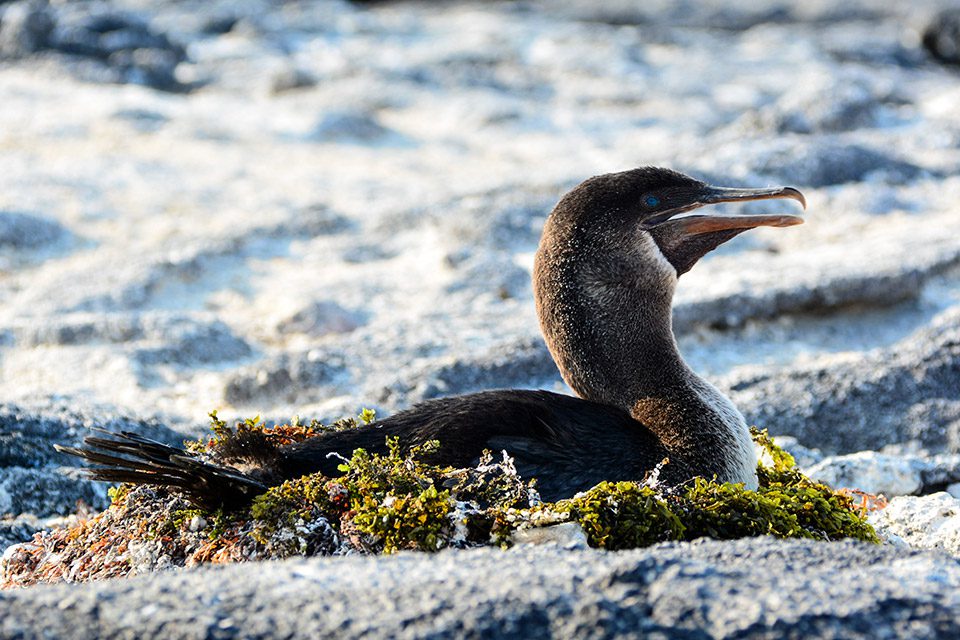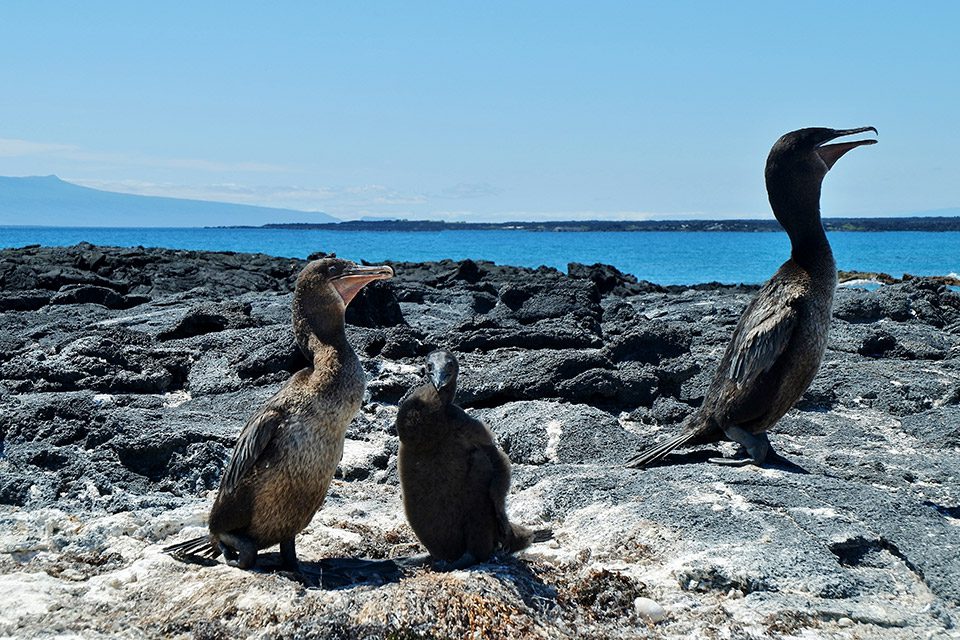Guests can witness flightless cormorants nesting in Galapagos during this time of year. Feathered but flightless, this incredibly rare and entirely endemic species of bird in the Galapagos finds itself a prized member of our Galapagos BIG15 group of iconic species. It’s during this time of year that the flightless cormorant finds itself nesting and nurturing its offspring right now, specifically at the beginning (of the end) for the Dry Season in Galapagos.
TALK TO A DESTINATION EXPERT

Diego Zapata

Rosa Mena

Sandy Lara

Diego Zapata

Rosa Mena

Sandy Lara
An Obligatory Precursor to the Hatching…
Flightless cormorants have a rather interesting way of displaying their interest in one another. Courtship involves the pair swimming in the water with their necks curled into “s-like” shapes against their bodies as they circle around each other closely. If the pair is a match, they both head onto the land to begin making their nest together. The nest itself usually consists of small pieces of what natural objects they can gather, be it seaweed, twigs, small rocks, and other debris. They work as a team and their nest ends up being situated relatively close to the shoreline. What makes this time of the year so optimal and encouraging for them to breed is the fact that sea surface temperatures tend to be much cooler throughout this time of year, a natural phenomenon which brings in a lot of deep-sea nutrients and, consequently, marine food.

Fun Fact: Male flightless cormorants nesting in Galapagos often bring small “gifts” to their female counterpart which she accepts and then adds to the nest. The gifts are again pieces of nature that are practical items for the nest itself.
Flightless Cormorants Nesting in Galapagos
The teamwork and buddy-romance don’t end there. On average, three whitish eggs are laid by the female and are then incubated by both pairs as they take turns. In spite of their efforts, it’s not unusual for only one of the eggs to make it up to hatching. Once hatching, both parents again will take turns brooding their chick so as to protect them from the elements and predators. It’s during this time, too, that both parents will forage for food, yet it’s the female that usually manages to provide almost double the quantity of food that the father brings in.

Chicks are brooded for around 70 days before becoming fully independent. A peculiar thing about the flightless cormorant is that females have been observed as abandoning their nest should resources and food be overly abundant. She leaves the parenting duties entirely to the father as she herself goes and recouples with another male and has another clutch. This means it is possible for a female to have several broods in just a single season, but it’s not all that common due to the fact that food rarely rises to such abundant quantities.

Flightless cormorants have an average age of 13 years, are listed as a vulnerable species but have a 90% survival rate in the Galapagos.
Flightless cormorants nesting in Galapagos is a sight definitely worth checking out and appreciating. It is an exclusive species that can only be viewed on the Santa Cruz II Galapagos cruise’s Western Islands itinerary, specifically on the islands of Fernandina and Isabela.

Javier Garcia

Eduardo Silva

Carolina Escobar
START PLANNING YOUR TRIP

Javier Garcia

Eduardo Silva

Carolina Escobar
Get in touch for more
CONTACT US

